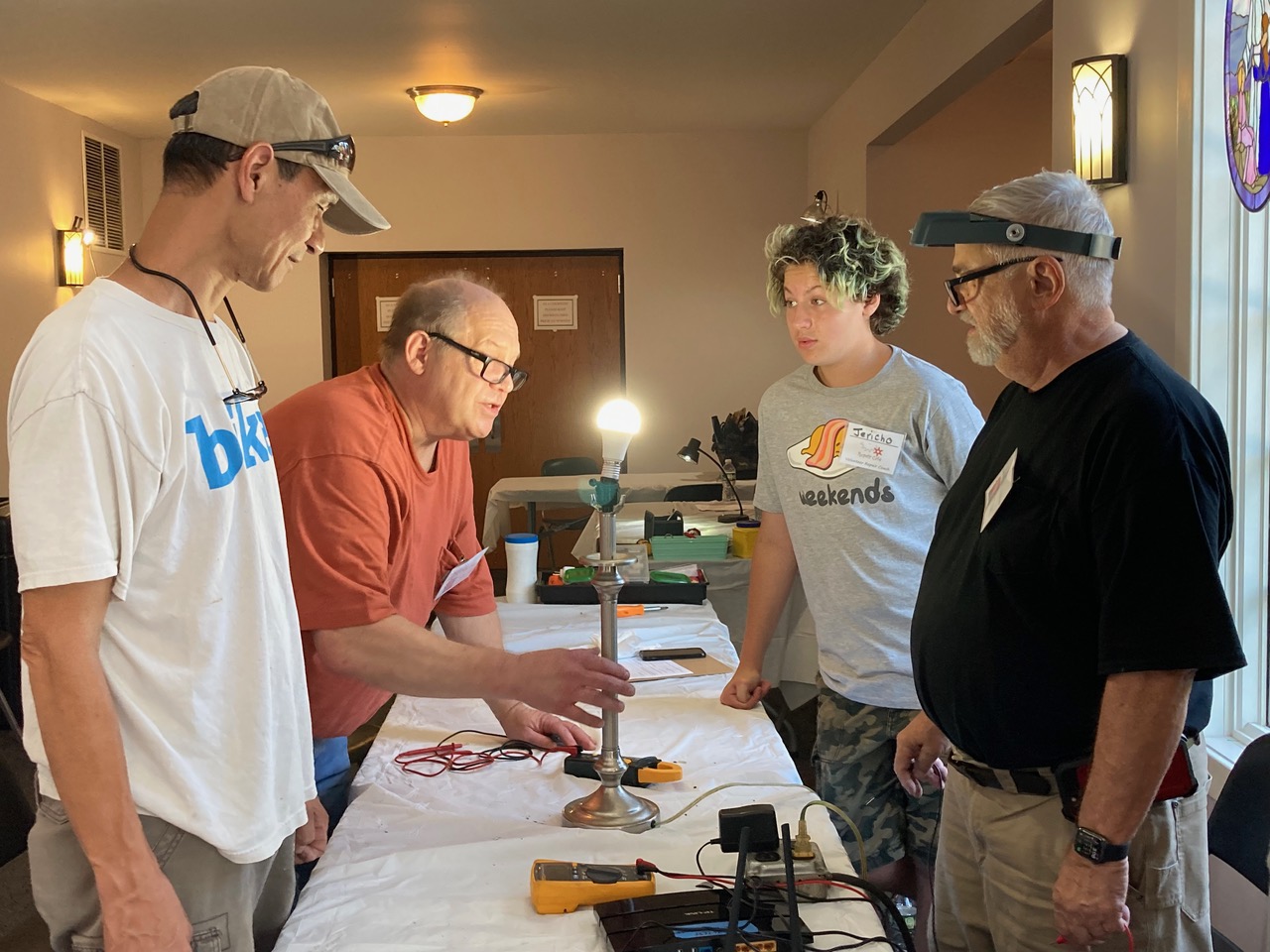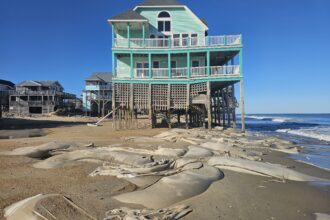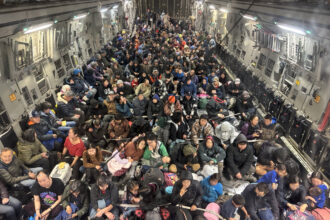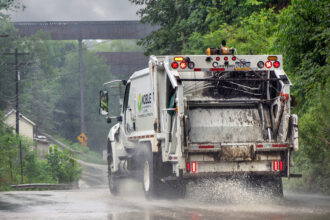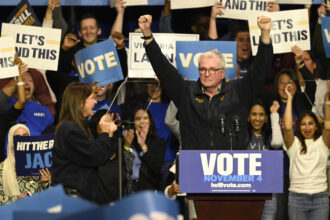Last Friday, a group gathered inside a building in East London, holding an unusual medley of used goods, from tattered teddy bears and old shoes to an elegant but broken vintage blender.
These people weren’t there to donate their weathered wares. They were there to resurrect them.
Welcome to the “Repair Café” at the University College London, an occasional event where locals can bring their damaged items to be fixed by a team of experts and engineers, free of charge. The project is part of a growing chain of more than 2,500 workshops popping up around the world to help reduce rampant consumption by building “a culture of care and repair,” according to the nonprofit Repair Café International Foundation, which launched in 2010.
As carbon-hungry consumer production and its subsequent waste surge to all-time highs, experts say that the concept can help curb pollution while promoting a more circular economy. But a few major barriers stand in the way of this repair revolution. Among the top threats? Free, one-day delivery.
A Repair Mindset: In a global economy that runs on consumption, products aren’t always built to last.
The rise of cheap, fast fashion has led to shorter life cycles for clothes, with items often lasting less than 10 wears before falling apart. Big technology companies, such as Apple and Microsoft, have been accused of and sued for deliberately designing phones or laptops with limited lifespans or that cannot support updates to spur consumers to buy newer models.
In certain cases, companies have created products with incredibly long lifespans, but discontinued them after realizing they generate less revenue because users don’t have to buy them as frequently. Light bulbs, for example. A discontinued incandescent bulb—nicknamed the Centennial Light—is still working more than 120 years later at a fire station in California (there is a livestream to prove it).
This consumerism has led to massive waste. Each year, billions of tons of discarded products end up in landfills around the world or overflow into the ocean and other fragile ecosystems.
“Waste drives the economy, it turns out,” Mark Miodownik, a materials scientist and engineer at University College London, told me. He helps run the college’s repair cafe events. “Of course, the downside of it is that it will reach physical limits of the planet to absorb all the waste, and we’re reaching them now, and we haven’t really taken care of that bit of the problem.”
To buck this consumerist culture, Amsterdam-based sustainability advocate Martine Postma organized the first official “Repair Cafe” in 2009. It has since grown into an international network of tinkerers who have expanded or iterated on the concept to fit their local communities. New York alone has nearly 70 cafes across the state, which host at least one event each year to help locals bring their beloved jewelry, home goods or technology back to life.
Suzie Fromer has spent three years as a coordinator at the nonprofit Sustainable Hudson Valley, which helps organize and run dozens of cafes in the region. She told me that at the nearly 160 cafe events held last year, volunteers fixed more than 7,400 items. Lamps are the most commonly brought items, but fixers have repaired everything from decorative vases to beloved doll houses.
“It changes your relationships to your things because you no longer see them as something that you’re bothered by and have to throw out. It’s something you can work with. … It’s an item that can be repaired, and it can last a long time,” Fromer said.
It isn’t a drop-off service; rather, people sit with the fixer to try to learn how they might be able to repair their own items in the future, which has helped build a sense of community at each event, she said. Sometimes there are emotional moments; for example, Fromer, a jewelry designer in her spare time, recently helped someone repair a necklace their uncle had given to them before he passed away.
Jewelry often “has value, you know, separate from its financial costs,” she said.
Miodownik said repair cafes in London have a similarly communal vibe. In fact, a 2024 report by his team found that repair activities such as cafes have broader mental health benefits, from skills development to social inclusion and wellbeing.
“There is a sort of rejection of the disposable culture, but you don’t feel that vibe in the room. It’s actually people just trying to resurrect these beloved objects,” Miodownik said. “I think the truth is that people aren’t coming thinking they’re going to go away with a lot of skills, but they are going to come away feeling supported and that they know people with the right skills, and that they might have something to offer, too.”
Right to Repair: Experts say a few major hurdles are preventing repair culture from dominating modern society.
For many products, such as clothes and appliances, buying a new product can often be cheaper than fixing the one you own. The convenience of free, rapid shipping also means that you are likely to get a new product faster than your old one can be fixed if the repair is more complicated—or there may not even be someone nearby with the expertise to fix it, Fromer said.
On top of this, some products, such as phones, cars and tractors, are produced in a way that prevents mechanics from accessing diagnostic tools or broken parts without taking it to the manufacturer. For example, repair advocates have pointed out that Apple AirPods are extremely difficult to disassemble and repair without damaging the casing, Vox reports. States including California, Colorado and Minnesota have passed “Right to Repair” legislation to protect consumers’ ability to fix or modify their purchases, but many states still lack these safeguards.
If the current rate of consumerism and waste continues, Miodownik said that at some point “we are going to hit a wall.”
“Carbon dioxide in the air is going up, plastic in the sea is going up, microplastics in our blood [are] going up. You just look at any of these metrics of our consumerist addiction, and that’s going to kill us,” he said. “There’s going to be a big wall and the question is, when is the big wall going to cause such destruction that people come to their senses? Or can we be smart and come to our senses before we hit a disaster?”
Miodownik thinks we can, and repair cafes are part of what’s fueling his belief.
“You see people’s delight in bringing these things back to life,” he said. “Their lives are just as rich having a repaired thing that’s old than if they bought something new.”
I asked if he practices what he preaches, and whether he had ever repaired the sweater he was wearing during our Zoom interview.
“I’m afraid that’s true,” he said with a laugh, holding it up to show off a stitch in the side.
More Top Climate News
An analysis by The Washington Post found that Democrats in the United States have largely pulled back from messaging around climate change in social media posts, podcast appearances and speeches. The reporting reveals that references to “climate change” peaked in August 2022 when Congress passed the Inflation Reduction Act under President Joe Biden. Now, the analysis found, Democrats are instead focusing more on energy and electricity costs.
“The pendulum is going to swing back, for sure,” Jason Bordoff at the Center on Global Energy Policy at Columbia University told The Post. “We know that the impacts of climate change are going to be quite bad, and I don’t think people can ignore those forever.”
The Senate passed a bill on Monday to end the longest government shutdown in history, which is now headed to the House for a final vote as soon as Wednesday. However, the delay has caused widespread damage to crucial government programs and the people who depend on them. One of the hardest hit has been the Supplemental Nutrition Assistance Program, or SNAP, which helps provide food for around 42 million Americans. While the program has been paused, Indigenous groups have emphasized the importance of traditional practices for hunting and farming to secure food and increase food sovereignty, Miacel Spotted Elk reports for Grist.
The United Nations’ 30th climate conference, COP30, is in full swing as representatives meet in Brazil to map out the next steps to lower greenhouse gas emissions and curb climate change. California Gov. Gavin Newsom is in attendance and has been taking shots at the Trump administration’s absence and recent tariffs on the host country, Reuters reports.
“We’re in Brazil, one of our great trading partners, one of the world’s great democracies. I mean, hell, home to all the rare earth metals we need. This is the country we should be engaging with instead of giving the middle finger with 50 percent tariffs,” Newsom said at a global investors summit held on Monday in São Paulo.
Postcard From … Wyoming


For this week’s installment of “Postcards From,” Today’s Climate reader Kaitlyn Davidson sent photos from a solo trip to Yellowstone National Park in Wyoming.
“I learned how to be in the right place at the right time, but luck certainly also contributed to several incredibly special encounters with grizzly bears and wolves,” she said over email. Her tips for capturing the best photos: getting up early, tracking carcasses and listening to and engaging with the local community.
“I use iNaturalist to identify and track my wildlife sightings and to contribute to citizen science,” she said. “The more people participate in noticing, documenting, and valuing nature, the better positioned we are to properly care for every living being we share this planet with!”
About This Story
Perhaps you noticed: This story, like all the news we publish, is free to read. That’s because Inside Climate News is a 501c3 nonprofit organization. We do not charge a subscription fee, lock our news behind a paywall, or clutter our website with ads. We make our news on climate and the environment freely available to you and anyone who wants it.
That’s not all. We also share our news for free with scores of other media organizations around the country. Many of them can’t afford to do environmental journalism of their own. We’ve built bureaus from coast to coast to report local stories, collaborate with local newsrooms and co-publish articles so that this vital work is shared as widely as possible.
Two of us launched ICN in 2007. Six years later we earned a Pulitzer Prize for National Reporting, and now we run the oldest and largest dedicated climate newsroom in the nation. We tell the story in all its complexity. We hold polluters accountable. We expose environmental injustice. We debunk misinformation. We scrutinize solutions and inspire action.
Donations from readers like you fund every aspect of what we do. If you don’t already, will you support our ongoing work, our reporting on the biggest crisis facing our planet, and help us reach even more readers in more places?
Please take a moment to make a tax-deductible donation. Every one of them makes a difference.
Thank you,


